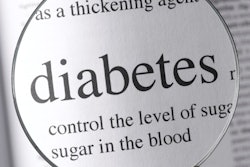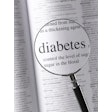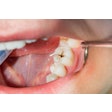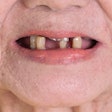
Most of your patients may be unaware that they may have periodontal disease, but some patients may also be unaware that they have diabetes, according to a presentation by Sam Low, DDS, and Souvik Sen, MD, MPH, at the recent ADA 2015 annual meeting in Washington, DC.
Most patients are also unaware of the link between periodontal disease and diabetes, noted Dr. Low, speaking at a Philips presentation, titled "Diabetic Patient Care: Connecting Oral and Systemic Health." Dr. Low is a professor emeritus of periodontics at the University of Florida College of Dentistry.
"It's important to disrupt the stimulus (of periodontal disease)," he said. "What the dentist does in the chair is important, but what the patients do at home is the key."
The "diabetes belt"
Dr. Sen showed a Centers for Disease Prevention and Control map of the U.S. that illustrated how the highest rates for both stroke and diabetes corresponded, with the Southeastern region being a focus.
 These maps show the rates of diabetes (purple) and stroke (orange) in the U.S. As the presenters noted, the Southeastern region is known as the "stroke belt" and the "diabetes belt." Bottom: 2007 U.S. estimates of diagnosed diabetes among adults age 20 years and older. The maps were created using the Interactive Atlas of Heart Disease and Stroke, a website developed by the CDC Division for Heart Disease and Stroke Prevention. www.cdc.gov/dhdsp/maps.
These maps show the rates of diabetes (purple) and stroke (orange) in the U.S. As the presenters noted, the Southeastern region is known as the "stroke belt" and the "diabetes belt." Bottom: 2007 U.S. estimates of diagnosed diabetes among adults age 20 years and older. The maps were created using the Interactive Atlas of Heart Disease and Stroke, a website developed by the CDC Division for Heart Disease and Stroke Prevention. www.cdc.gov/dhdsp/maps.Not only do the rates of diabetes and stroke correspond, Dr. Sen said, but "dental disease" is also more common in the so-called "stroke belt." He cited a 2009 study in the journal Atherosclerosis confirming this statement.
"The link is becoming more clear between periodontitis, diabetes, and stroke," he said. Dr. Sen is a professor and the chair of the department of neurology at the University of South Carolina in Columbia, SC.
Dr. Low noted that he was "staggered" to learn that almost 24% of patients age 60 and older have diabetes. "In other words, less than 1 out of every 5 patients you see in your dental office over the age of 60 will likely have diabetes," he said.
“ What the dentist does in the chair is important, but what the patients do at home is the key.”
Patients with type 2 diabetes have about threefold increased odds of having periodontitis, compared with patients without diabetes, according to another study he cited.
Dr. Low then cited an oral health study by United Concordia of 1.7 million patients. This study found that annual healthcare savings of more than $3,000 were possible when medical and pharmacy savings are combined for patients with diabetes who are treated for periodontitis and have at least seven annual visits as part of their therapy.
What dentists and oral health practitioners need to teach their patients to do is to "disrupt the stimulus," he said.
What patients do at home is the key, he said. Manufacturers and dentists have to "make it easy and convenient" for the patient to change their habits for better oral and systemic health.
"A person with a healthy mouth will live, on the average, about 10 years longer," Dr. Low said.
3 tips
Dr. Sen then offered three tips to help your patients prevent a stroke:
- Lifestyle modifications, such as diet, exercise, and dental and periodontal care
- Understanding their vascular risk factors
- Regular dental and healthcare checkups with their providers
Dr. Low reminded the audience that most patients are unaware they have periodontal disease, so it is important to talk with your patients about prevention.



















